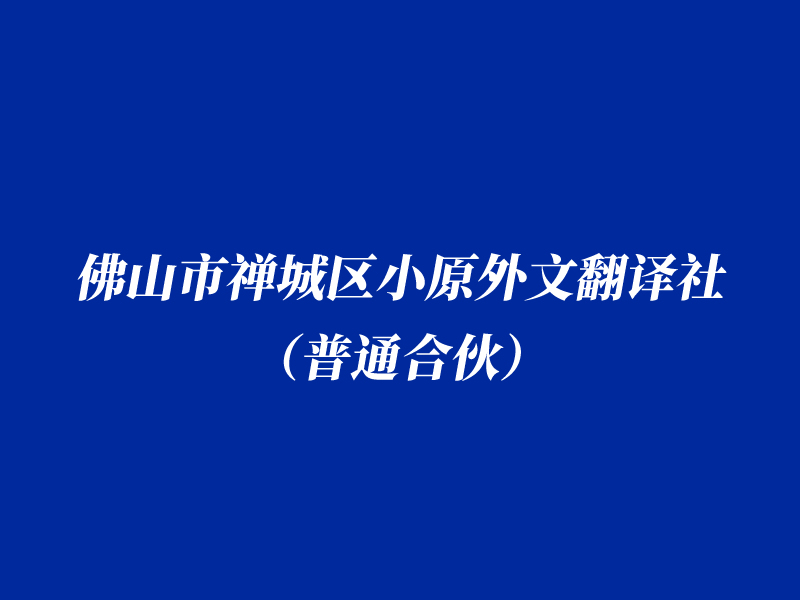Feb
2023
英汉互译的过程中会遇到很多的问题,我们掌握了翻译技巧就会很快的解决问题,佛山翻译公司就带大家了解一下翻译时常用的技巧有什么?
There will be many problems in the process of English Chinese translation.
If we master the translation skills, we will quickly solve the problems. Shangyu
translation company will take you to know what skills are commonly used in
translation?
1、增译法:指根据英汉两种语言不同的思维方式、语言习惯和表达方式,在翻译时增添一些词、短句或句子,以便更准确地表达出原文所包含的意义。
1. Additional translation: it refers to adding some words, short sentences
or sentences to the translation according to the different ways of thinking,
language habits and expressions of English and Chinese, so as to more accurately
express the meaning contained in the original text.
2、省译法:这是与增译法相对应的一种翻译方法,即删去不符合目标语思维习惯、语言习惯和表达方式的词,以避免译文累赘。增译法的例句反之即可。
2. Omission translation: This is a translation method corresponding to the
addition method, i.e. deleting words that do not conform to the thinking habits,
language habits and expressions of the target language, so as to avoid
unnecessary translation. The example sentence of addition translation method is
the opposite.
3、转换法:指翻译过程中为了使译文符合目标语的表述方式、方法和习惯而对原句中的词类、句型和语态等进行转换。
3. Conversion method refers to the conversion of parts of speech, sentence
pattern and voice in the original sentence in order to make the translation
conform to the expression mode, method and habit of the target language.
4、拆句法和合并法:这是两种相对应的翻译方法。拆句法是把一个长而复杂的句子拆译成若干个较短、较简单的句子,通常用于英译汉;合并法是把若干个短句合并成一个长句,一般用于汉译英。
4. Disambiguation and combination: These are two corresponding translation
methods. Disambiguation is the translation of a long and complex sentence into
several short and simple sentences, which is usually used in English Chinese
translation; the combination method is to combine several short sentences into a
long sentence, which is generally used in Chinese English translation.
5、正译法和反译法:这两种方法通常用于汉译英,偶尔也用于英译汉。所谓正译,是指把句子按照与汉语相同的语序或表达方式译成英语。所谓反译则是指把句子按照与汉语相反的语序或表达方式译成英语。
5. The two methods are usually used for C-E translation and occasionally
for E-C translation. The so-called correct translation refers to the translation
of sentences into English in the same word order or expression as Chinese. The
so-called reverse translation refers to the translation of sentences into
English according to the word order or expression mode opposite to Chinese.
6、倒置法:在汉语中,定语修饰语和状语修饰语往往位于被修饰语之前;在英语中,许多修饰语常常位于被修饰语之后,因此翻译时往往要把原文的语序颠倒过来。
6. Inversion: in Chinese, attributive modifiers and adverbial modifiers are
often placed before the modified; in English, many modifiers are often placed
after the modified, so the word order of the original text is often reversed in
translation.
7、包孕法:这种方法多用于英译汉。所谓包孕是指在把英语长句译成汉语时,把英语后置成分按照汉语的正常语序放在中心词之前,使修饰成分在汉语句中形成前置包孕。
7. Inclusion method: this method is often used in English Chinese
translation. The so-called inclusion refers to that when translating long
English sentences into Chinese, the English postposition element is placed
before the head word according to the normal word order of Chinese, so that the
modifier can form a preposition package in the Chinese sentence.
8、插入法:指把难以处理的句子成分用破折号、括号或前后逗号插入译句中。
8. Insertion: refers to inserting difficult sentence elements into
translated sentences with dashes, brackets or commas before and after.
9、重组法:指在进行英译汉时,为了使译文流畅和更符合汉语叙事论理的习惯,在捋清英语长句的结构、弄懂英语原意的基础上,**摆脱原文语序和句子形式,对句子进行重新组合。
9. Reorganization: in order to make the translation fluent and more in line
with the Chinese narrative theory, in order to make the translation fluent and
more in line with the Chinese narrative theory, on the basis of straightening
out the structure of long English sentences and understanding the original
meaning of English, completely get rid of the original word order and sentence
form, and recombine the sentences.
10、综合法:是指单用某种翻译技巧无法译出时,着眼篇章,以逻辑分析为基础,同时使用转换法、倒置法、增译法、省译法、拆句法等多种翻译技巧的方法。
10. Comprehensive method: it refers to a method that focuses on the text
and takes logical analysis as the basis when it can not be translated by a
single translation technique, and uses a variety of translation techniques such
as transformation, inversion, addition, omission and syntactic
decomposition.
上一篇:翻译工作的职责有什么?
下一篇:翻译新手常出现哪些错误?
- [04-30] 伊利公布2017年报 “五大”核心指标稳居行业**
- [07-27] 大环境下 全球翻译行业的市场走向和预测
- [07-02] 语言服务助力国内企业“走出去”
- [11-12] 旅游翻译要注重什么?
- [07-10] 佛山翻译在哪里可以翻译驾照
- [06-20] 笔译翻译的技巧有什么
- [11-30] 英语同声传译的费用是多少?
- [08-20] 合同翻译的步骤一般是什么-

-
地址1:佛山市禅城区汾江中路144号科华大厦1002室(创业大厦正对面)
电话:0757-82285965 13318391728
-
地址2:佛山市禅城区魁奇路澜石(国际)金属交易中心大厅一楼
电话:0757-82285965 13318391728




